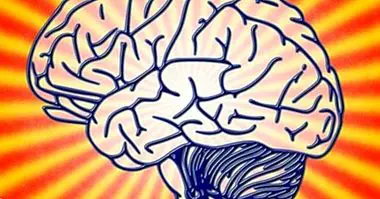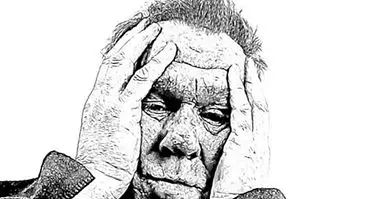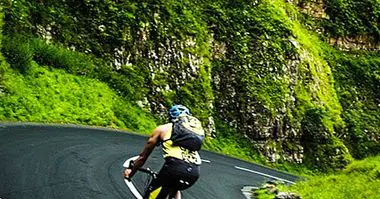Associative learning: types and characteristics
Learning from our experiences based on what we have lived before is fundamental for survival. It allows the execution of increasingly adaptive behavior patterns , and even predict possible outcomes of our actions: for example, we learn to avoid certain stimuli and actively seek others because we have been able to link them with some kind of consequence before.
Why we act as we do and how we have learned to do it is something that has intrigued humanity for centuries and has led to the exploration and investigation of the subject by different disciplines such as psychology, generating different currents and theories. Among these theoretical currents we can find behaviorism, for which the main basis and explanation of the behavior is found in the capacity of association and associative learning . It is about this concept that we are going to talk about throughout this article.
- Related article: "The 13 types of learning: what are they?"
The concept of associative learning
Associative learning is understood as the process by which human beings and other living beings establish a link or association between two or more phenomena, in such a way that they learn and react to this relationship. This learning supposes a change in the behavior of the subject who acquires it , to the point of anticipating that certain stimulations or actions will lead to the arrival of other stimuli or consequences.
For it to occur it is necessary that there is some condensation, habituation or sensitization towards the existing relationship between both elements, something that in turn implies that they occur repeatedly as to some extent concurrent and contingent.
It is a concept specially worked by behaviorism, a paradigm of psychology that focused on the study of behavior as the only empirical and observable element of the psyche (leaving aside the role of the psychic apparatus itself in it) and that I was looking for provide an objective and scientific explanation of our behavior , being in fact the capacity of association one of its main bases.
Originally, behaviorism valued that associative learning depended only on the properties of the stimuli and how they were presented, with the apprentice being a totally passive subject who simply captured the relationship.
However, as the years have gone by and new currents such as cognitivist and cognitive-behavioral have developed, the understanding of this phenomenon has included more and more cognitive variables of the subject, becoming a more active element in that type Learning.
In fact, at present it is considered that associative learning allows us to be able to make predictions and establish new strategies derived from the reception of information allowed by it , establishing causal relationships based on repeated exposure to stimuli. And it is that we not only associate stimuli, but also ideas, concepts and thoughts in such a way that we can develop new knowledge even without having to undergo a real stimulation.
- Maybe you're interested: "Behaviorism: history, concepts and main authors"
Types of basic associative learning
Next we will see two of the main forms of associative learning, which although they do not explain the totality of learning, do serve as some of the bases of associative learning.
Classical conditioning
Classical or Pavlovian conditioning is one of the most basic but at the same time most fundamental types of associative learning that have been investigated, and its study serves as a basis for deepening the phenomenon of association. In classical conditioning, the behavior of humans and other animals is considered it is derived from learning the existing relationship between various stimuli .
Specifically, it is learned that two stimuli are related due to the perception that both occur contingent and close in space and time, observing repeatedly that the appearance or disappearance of a stimulus precedes or is related to the appearance or disappearance of another.
In this process, a stimulus capable of generating by itself an unconditioned physiological response or unconditioned stimulus it is paired or related to a neutral stimulus , in such a way that as a joint presentation takes place it is conditioned in such a way that it ends up generating a response equal or similar to that which would generate the unconditioned stimulus, which would be called a conditioned response.
This type of relationship is learned on the basis of repetition, although depending on the stimulus, its salience and how the relationship is presented can generate a faster or slower association. Also, the association can occur both at the level of positive stimulation (we learn that things we like relate to neutral things) and aversive (Painful stimuli are associated with other neutrals, which end up generating fear).
For example, imagine that they bring us our favorite dish: its appearance (unconditioned stimulus) makes us want to eat and we begin to salivate (unconditional response). Now, if someone usually rings a bell shortly before they bring us food, we will end up associating the idea that the bell is linked to food, which in the long run will make a stimulus that at first was indifferent to us ( neutral stimulus) to have a value similar to that of food (the sound of the bell goes from neutral to conditioned stimulus) and generate a reaction of, in this case, salivation (conditioned response).
- Related article: "[Classical conditioning and its most important experiments] (/ psychology / conditioning-classic-experiments"
Operant conditioning
Another of the main types of associative learning is the operative conditioning of Skinner, which goes from associating mere stimuli to considering the existing association between the own emission or non-emission of a behavior and the consequences that this has .
In this type of associative learning we find that the realization of a specific behavior or behavior has a series of consequences, which will alter the probability that said behavior will reappear due to the learned association. Thus we can find cases of reinforcement (positive or negative) or punishment (positive or negative), which respectively imply the increase or decrease of the behavior from the presence of certain consequences.
In positive reinforcement, behavior leads to the appearance of an appetitive stimulus, while in negative reinforcement an aversive stimulus is eliminated or stops appearing: in both cases the behavior is considered positive for the subject, which increases the likelihood of its appearance .
With regard to punishment: in the positive punishment a consequence or aversive stimulus is applied or administered if the subject carries out the behavior, while in the negative punishment a stimulus or positive or appetitive element for the subject is eliminated or extracted. In both cases the probability of repeating the behavior decreases, given that it has aversive consequences.
In addition to this we must also bear in mind that the consequences may be present immediately or be delayed, something that will also alter the probability of the appearance of behaviors and that may be mediated by aspects such as the manner in which the behavior and the consequences or the sequencing of this (for example if there is a contingency between the two fixed or variable, or if the consequences appear each time the behavior is performed or during a specific time interval).
Learning by observation
Another type of learning that part of the association is learning by observation. In this case, starting from the previous conditioning, an association is made between what happens to him or someone else and us, and we can achieve an associative learning without having to directly experience the association of stimuli. Within this we can find, for example, social learning or the imitation of models.
Bibliographic references:
- Dickinson, A. (1980). Contemporary animal learning theory. Cambridge: Cambridge University Press.
- Higueras, B. and Muñoz, J.J. (2012). Basic psychology CEDE Preparation Manual PIR, 08. CEDE: Madrid.
- Rodrigo, T. and Prado, J. Associative learning and spatial learning: history of a line of research (1981-2001). In Vila, J., Nieto, J. and Rosas, J.M. (2003). Contemporary research in associative learning. Studies in Spain and Mexico. Univesitas collection of the mole.



















